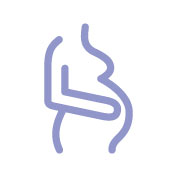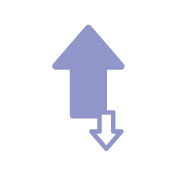
Kegel exercises are exercises to strengthen your pelvic floor muscles. You might also hear them called pelvic floor exercises. They affect the muscles that support your uterus, bladder, small intestine, and rectum. Kegels don’t just help keep them fit, they can help you avoid bladder leaks and passing gas or stool by accident. They can even improve sexual sensation and improve intimacy with your partner.
Kegels can be performed manually or with an electronic pelvic floor exerciser which utilises small electric currents to stimulate a contraction in the muscles. Kegels do tighten the vagina but not by tightening the vaginal muscles, as some people may think. Kegels strengthen the pelvic floor muscles that surround the vagina. Making Kegel exercises part of your daily routine is very easy - you can do Kegel exercises discreetly just about any time, whether you're sitting at your desk or relaxing on the sofa. So, do kegels work?
Well, the contraction exercises the muscle and, as with any other muscle, the more you exercise it, the stronger it gets– so, yes it works!
So, what do Kegel exercises do? When Kegels are done properly and for the recommended amount of time, you can reap the amazing benefits, such as:

Leakage reduction
Stronger pelvic floor muscles mean less urinary, faecal and gas leakage because the pelvic floor supports all the organs and holds back urine or gas while contributing to healthier bowel movements.

Postpartum recovery
The pelvic floor can be stretched and weakened with pregnancy. Daily Kegels during pregnancy and after childbirth can help maintain pelvic floor support, treat incontinence, and prevent haemorrhoids. Kegels should be done every day to maintain muscle strength.

Help with stress incontinence
Stress incontinence is urine leakage when any kind of pressure is put on the bladder, for example when laughing, coughing, sneezing, jumping, or lifting something heavy. Kegels can help prevent these leaks.

Increased intimate
sensation Regular Kegel exercises help keep the muscles toned and contribute to a more satisfying intimate experience.
Kegels only work when you’re doing them correctly. So, here are some tips to help you get the perfect Kegel technique.

Find your pelvic floor muscles:
The easiest way to find the right muscles is to try to stop urination midstream. Your pelvic floor muscles are what allow you to open and close your urethra during urination. That tightening sensation is a Kegel contraction. (But don’t make a habit out of doing Kegels this way, as it can cause more harm than good – only do this to check)

Lift up and in:
When you do a Kegel, lift your pelvic floor muscles (your vaginal muscles) up and in, hold for a few seconds, and release. You can check this by inserting a clean finger about 2 cm into your vagina to feel the contraction.

Remember it’s a two-step process:
Breathe and contract - make sure you fully relax your muscles to get the full benefit of the contraction and avoid wearing those muscles out.

Use an electronic pelvic floor toner
Toners such as the Ultra 20 which will ensure the exercises are performed safely and correctly. Complete with detailed instructions and condition guides to ensure your treatment is tailored to your specific issue, it prevents incorrect usage/application.
Breathe deeply and relax your body when you are doing these exercises. Make sure you are not tightening your stomach, thigh, buttock, or chest muscles. After 4 to 6 weeks, you should feel better and have fewer symptoms. Keep doing the exercises, but do not increase how many you do. Overdoing it can lead to straining when you urinate or move your bowels. If you’re still having troubles or just want to make sure you’re doing them right, remember that you can always ask your doctor for help. Ready to get started? View our extensive range of Kegel Toners



